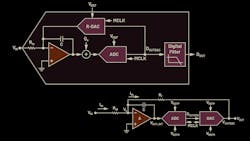CTSD Precision ADCs (Part 2): CTSD Architecture Explained (Download)
In Part 1, we highlighted the key challenges of incumbent signal-chain designs that can be simplified significantly with a precision continuous-time sigma-delta (CTSD) ADC, as it maintains continuous-time signal integrity while achieving the highest precision. Now, the question is what’s behind the CTSD architecture that enables it to achieve these advantages?
The traditional approach of explaining the concept of CTSD technology is to first gain an understanding of the basics of a discrete-time sigma-delta (DTSD) modulator loop and then substituting the discrete-time loop elements with equivalent continuous-time elements. While this method provides in-depth insight of sigma-delta functionality, we aim to provide a more intuitive understanding behind the inherent advantages of precision CTSD ADCs.
